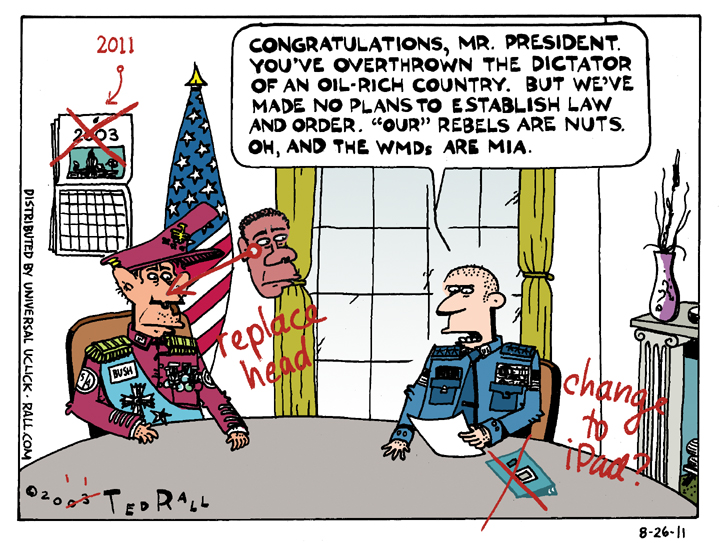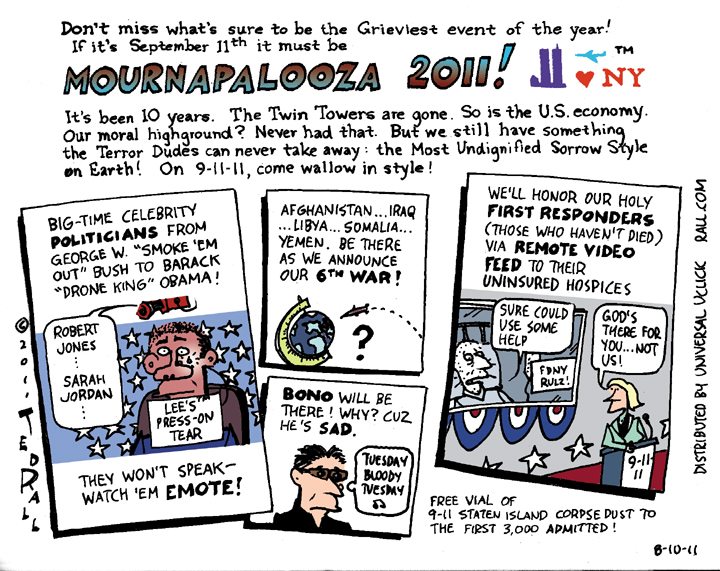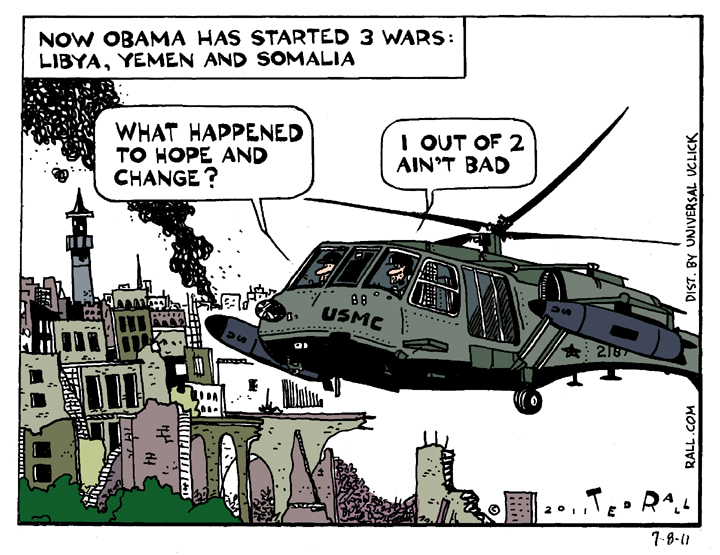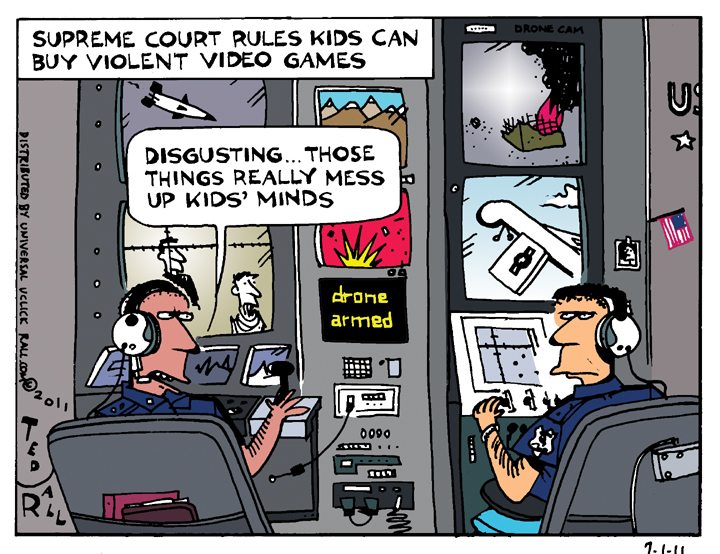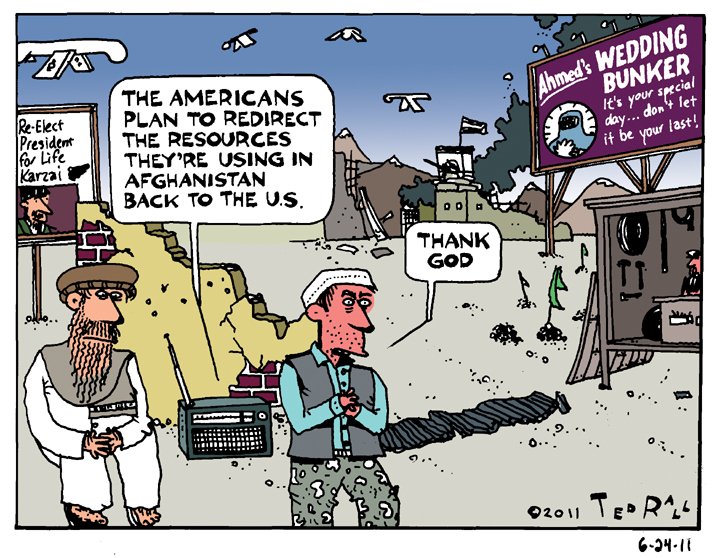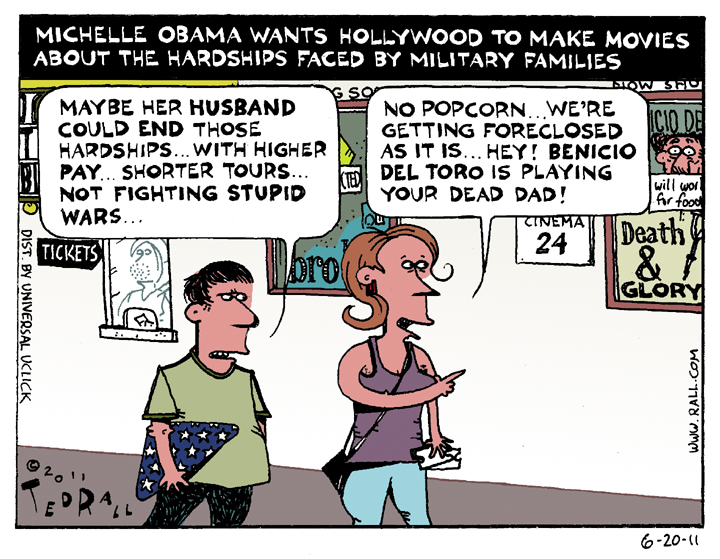Ten Years Later, Americans Still Stupid and Vulnerable
They say everything changed on 9/11. No one can dispute that. But we didn’t learn anything.
Like other events that forced Americans to reassess their national priorities (the Great Depression, Pearl Harbor, Sputnik) the attacks on New York and Washington were a traumatic, teachable moment.
The collective attention of the nation was finally focused upon problems that had gone neglected for many years. 9/11 was a chance to get smart—but we blew it.
First and foremost the attacks gave the United States a rare opportunity to reset its international reputation. Even countries known for anti-Americanism offered their support. “We are all Americans,” ran the headline of the French newspaper Le Monde.
The century of U.S. foreign policy that led to 9/11—supporting dictators, crushing democratic movements, spreading gangster capitalism at the point of a thousand nukes—should and could have been put on hold and reassessed in the wake of 9/11.
It wasn’t time to act. It was time to think.
It was time to lick our wounds, pretend to act confused, and play the victim. It was time to hope the world forgot how we supplied lists of pro-democracy activists to a young Saddam Hussein so he could collect and kill them, and forget the “Made in USA” labels on missiles shot into the Gaza Strip from U.S.-made helicopter gunships sold to Israel.
It was time, for once, to take the high road. The Bush Administration ought to have treated 9/11 as a police investigation, demanding that Pakistan extradite Osama bin Laden and other individuals wanted in connection with the attacks for prosecution by an international court.
Instead of assuming a temperate, thoughtful posture, the Bush Administration exploited 9/11 as an excuse to start two wars, both against defenseless countries that had little or nothing to do with the attacks. Bush and company legalized torture and ramped up support for unpopular dictatorships in South and Central Asia and the Middle East, all announced with bombastic cowboy talk.
Smoke ’em out! Worst of the worst! Dead or alive!
By 2003 the world hated us more than ever. A BBC poll showed that people in Jordan and Indonesia—moderate Muslim countries where Al Qaeda had killed locals with bombs—considered the U.S. a bigger security threat than the terrorist group.
In fairness to Condi Rice, Don Rumsfeld and Bush’s other leading war criminals, everyone else went along with them. The media refused to question them. Democratic politicians, including Hillary Clinton and Barack Obama, cast votes in favor of Bush’s wars. Democrats and leftist activists ought to have pushed for Bush’s impeachment; they were silent or supportive.
9/11 was “blowback”—proof that the U.S. can’t wage its wars overseas without suffering consequences at home. But we still haven’t learned that lesson. Ten years later, a “Democratic” president is fighting Bush’s wars as well as new ones against Libya, Somalia and Yemen. Now he’s saber-rattling against Syria.
American officials correctly inferred from 9/11 that security, particularly at airports but also in ports where container ships arrive daily from around the world, had been lax. Rather than act proactively to close gaps in transportation security, however, bureaucrats for the new Department of Homeland Security created a gauntlet of police-state harassment so onerous that it has threatened the financial health of the aviation industry.
“Aviation security is a joke, and it’s only a matter of time before terrorists destroy another airplane full of innocent passengers,” wrote Barbara Hollingsworth of The Washington Examiner after the 2009 “underwear bomber” scare. As Hollingsworth pointed out, the much-vaunted federal air marshals have been removed from flights because the TSA is too cheap to pay their hotel bills. (This is illegal.) What’s the point of taking off your shoes, she asked, when planes are still serviced overseas in unsecured facilities? No one has provided an answer.
Ten years after 9/11, there is still no real security check when you board a passenger train or bus. Perhaps the sheer quantity of goods arriving at American ports makes it impossible to screen them all, but we’re not even talking about the fact that we’ve basically given up on port security.
While we’re on the subject of post-9/11 security, what about air defenses? On 9/11 the airspace over the Lower 48 states was assigned to a dozen “weekend warrior” air national guard jets. Every last one of them was on the ground when the attacks began, allowing hijacked planes to tool around the skies for hours after they had been identified as dangerous.
Which could easily happen again. According to a 2009 report by the federal General Accounting Office on U.S. air defenses: “The Air Force has not implemented ASA [Air Sovereignty Alert] operations in accordance with DOD, NORAD, and Air Force directives and guidance, which instruct the Air Force to establish ASA as a steady-state (ongoing and indefinite) mission. The Air Force has not implemented the 140 actions it identified to establish ASA as a steady-state mission, which included integrating ASA operations into the Air Force’s planning, programming, and funding cycle. The Air Force has instead been focused on other priorities, such as overseas military operations.”
Maybe if it stopped spending so much time and money killing foreigners the American government could protect Americans.
On 9/11 hundreds of firefighters and policemen died because they couldn’t communicate on antiquated, segregated bandwidth. “Only one month away from the 10th anniversary of 9/11,” admits FCC chairman Julius Genachowski, “our first responders still don’t have an interoperable mobile broadband network for public safety. Our 911 call centers still can’t handle texts or pictures or video being sent by the phones that everyone has.”
Because the corporate masters of the Democratic and Republican parties love the low wage/weak labor environment created by illegal immigration, American land borders are intentionally left unguarded.
A lot changed on 9/11, but not everything.
We’re still governed by corrupt idiots. And we’re still putting up with them.
What does that say about us?
(Ted Rall is the author of “The Anti-American Manifesto.” His website is tedrall.com.)
COPYRIGHT 2011 TED RALL

